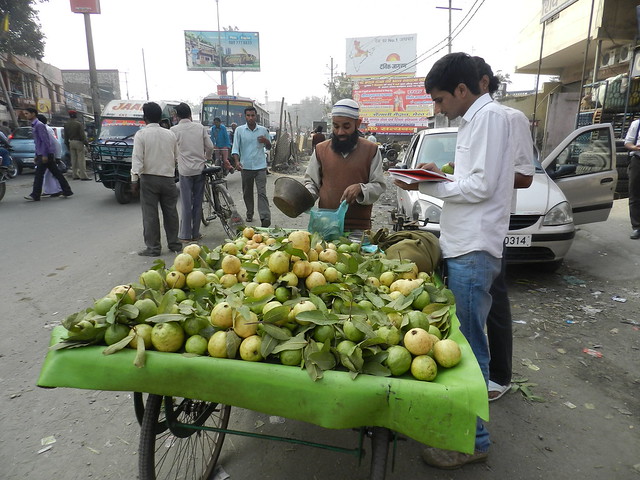By Mohammad Ali, TwoCircles.net
New Delhi: The Planning Commission of India, in its latest poverty estimates, has claimed that the number of poor Indians – both in urban and rural areas – has declined substantially between the periods of 2004-05 to 2009-10, but it has admitted that Muslims still are the leading religious community in urban poverty at national level and in rural poverty in many states.
According to the Poverty Estimates for 2009-10 released on 19th March 2012, Indian Muslims in urban areas have got the highest number of poor people. Christian community has the lowest number of poor in urban India.
Importantly, this was the first time that the Planning Commission had released poverty estimates also on the basis of religious category, even though data from only few states have been released for this category.
National poverty comes down
The commission’s report claims the all-India poverty has declined by 7.3 percentage points from 37.2% in 2004-05 to 29.8% in 2009-10. The urban poverty came down by 4.8 percentage points from 25.7% to 20.9% while the rural poverty has declined by 8.0 percentage points from 41.8% to 33.8%.
But it seems the decline has not passed through the Muslim community as they are still leader in urban poverty and also in many states in rural poverty.

Most Muslims are self-employed [TCN Photo]
Muslims lead in urban poverty
As per the Planning Commission’s figures on poverty and inequality, poverty ratio in urban areas at all India level is highest for Muslims (33.9%) i.e. every third Muslim in urban India is poor. And Tendulkar Committee – on whose methodology the poverty estimates were made both in 2004-05 and 2009-10 – had set cut-off mark for poor in 2006 as one who earns Rs 20 in urban areas and Rs 12 in rural areas.
Some states have lower than the national urban Muslim poverty percentage. Rajasthan has got 29.5% of poor Muslims in urban areas while West Bengal has 34.9%. But the situation is disturbing not only in poor UP but in Modi-led Gujarat which is rather considered as the most developed state of India and in Nitish Kumar-led “fast developing” state of Bihar also.
The urban areas of “developed” Gujarat has 42.4% poor Muslims while the national Muslim urban poverty percentage is 33.9%. Almost 50% of Muslims in urban areas of Uttar Pradesh are poor but “fast developing” Bihar of Nitish Kumar is ahead of UP. The figure for Bihar is 56.5%.
At national level, poverty is at its minimum (12.9%) among the Christian community in urban India.
Rural Muslim poverty
The Planning Commission has noted that the rural poverty has declined by 8.0 percentage points from 41.8% in 2004-05 to 33.8%. in 2009-10. But if we talk of Muslims, there are many states where Muslims have greater number of poor people than any other religious community.
The poverty figure of Muslims in rural areas is also quite disturbing. Assam has got almost 53.6 % of the total Muslim poor in rural parts of the Congress ruled state. In rural UP the figure for poor Muslims is disturbing 44.4% whereas the figure for West Bengal is 34.4% and for Gujarat it is 31.4%.
At national level, Sikhs have lowest number (11.9%) of poor people in rural areas.
The most disturbing part of the story is that this is the number of poor Muslims when one takes the definition of poor as somebody who manages his/her daily life with Rs 32 or less.
National Poverty ratio for Social Groups
In rural areas, Scheduled Tribes have the highest level of poverty (47.4%), followed by Scheduled Castes (SCs) (42.3%), and Other Backward Castes (OBC) (31.9%), against 33.8% for all classes.
In urban areas, SCs have 34.1% poor people followed by STs (30.4%) and OBC (24.3%) against 20.9% for all classes.
In rural Bihar and Chhattisgarh, nearly two-third of SCs and STs are poor, whereas in states such as Manipur, Orissa and Uttar Pradesh the poverty ratio for these groups is more than half.
Hundreds of Muslim castes come under the OBC category both at national level and states level.
Who is poor?
According to the Planning Commission of India, if you are earning more than Rs 32 per day you are not poor. The commission had come under attack over the Rs 32 per capita per day cut off for poverty line. In October 2011 Planning Commission had made this definition of poor in an affidavit it submitted in the Supreme Court. It said that persons consuming items worth more than Rs 32 per day in urban areas (Rs 26 in rural areas) are not poor.
The commission had made this cut-off mark on the basis of the Tendulkar Committee’ poverty cut-off mark of Rs 20 per day in urban area and Rs 12 in rural area in 2006.
